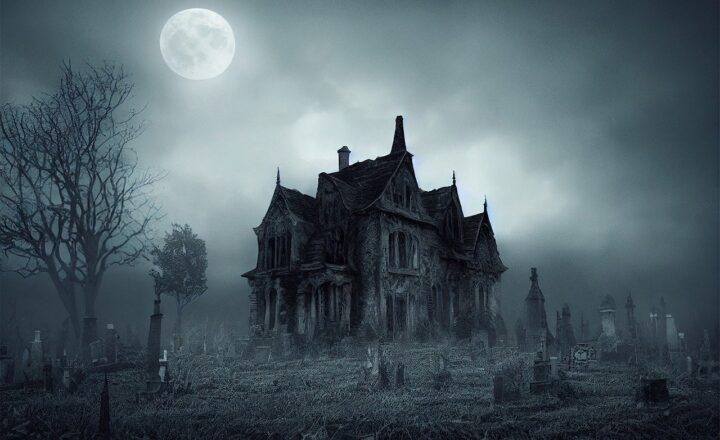The Art of Writing a Suspenseful Script: Lessons From Hollywood’s Best Horror Films
November 17, 2024

Horror films have been thrilling audiences for decades, and their essence lies in the art of suspense. Writing a suspenseful script is a craft that many aspire to master, yet it requires skill, understanding, and an innate sense of what truly terrifies an audience. In this article, we delve into the techniques and lessons derived from some of Hollywood’s best horror films that can help aspiring screenwriters create gripping, edge-of-the-seat narratives.
1. Understanding the Anatomy of Suspense
Suspense is a psychological state that creates tension and uncertainty in the viewer. It’s the air of dread that leaves audiences holding their breath, their hearts racing. To write a suspenseful script, one must grasp its anatomy:
- Conflict: Central to any story, the conflict must be clear and compelling. In horror films, this often involves the protagonist facing off against formidable foes—be it supernatural entities, serial killers, or even psychological demons.
- Stakes: What does the protagonist stand to lose? The stakes should be high, whether that’s personal safety, relationships, or even their sanity.
- Time Pressure: Introducing a ticking clock can amplify tension. Whether it’s a time-bound rescue mission or an impending doom, the urgency propels the narrative forward.
By constructing your suspenseful scenarios around these elements, your script will naturally evoke a sense of dread and anticipation.
2. Building Relatable Characters
Greta Garbo once said, “There are no enemies; all are friends.” This sentiment rings true in horror as well. The best horror scripts humanize their characters, making audiences invest emotionally in their fates. Here are vital aspects to consider when crafting your characters:
- Backstory: Flesh out your character’s backgrounds. Audiences fear for characters they understand. Provide motivations that make viewers root for them, while also exploring their flaws, which can lead to their downfall.
- Relatability: Write characters that viewers can see themselves in. This amplifies the terror, making the horror feel closer to home. Think of how the scares in ‘Psycho’ resonate because of Norman Bates’ layered character.
- Arc: A character’s journey should be transformative. A compelling transformation heightens stakes; think of the fall from grace of many horror protagonists.
By giving your characters depth and relatability, audiences will not only feel their fear but will also invest emotionally in their survival.
3. Mastering The Build-Up
The tension in horror scripts comes from anticipation. Rather than showing the monster right away, it’s pivotal to build toward the moments of scary payoff. Techniques that can enhance the suspense include:
- Foreshadowing: Lay breadcrumbs that signal danger ahead, piquing curiosity while setting an ominous tone. Films like “Jaws” expertly used this by hinting at the shark’s presence before the first attack.
- Atmosphere: Use vivid descriptions to create an unsettling mood. Utilize settings that evoke fear, such as dark woods, abandoned asylums, or familiar domestic spaces turned sinister.
- Isolation: Isolating characters can heighten the tension. When the protagonist is cut off from external help, the dread amplifies. Think of the claustrophobic element in “The Shining” with Jack, Wendy, and Danny trapped in the Overlook Hotel.
The gradual build-up keeps audiences on edge, eagerly anticipating the release of their tension through a scare or twist.
4. The Element of Surprise
While building suspense is crucial, delivering surprises is equally significant. The unexpected keeps viewers engaged and heightens their fear. For example:
- Jump Scares: Effective when used sparingly. A sudden loud noise or movement can elicit sharp reactions from audiences when they least expect it.
- Plot Twists: A well-placed twist can change everything, leaving audiences baffled and frightened. Craft twists that feel believable yet surprising, such as in “Psycho” with Norman’s true identity.
- Red Herrings: Misleading audiences into thinking one character is the threat can add depth and complexity to your plot. It keeps them guessing right up until the climax.
Creating surprises maintains engagement while elevating the horror element within your script.
5. Creating a Gripping Conclusion
The climax of a horror film is where all tension culminates. A truly horrific ending can linger in viewers’ minds long after the credits roll. Here’s how to ensure your conclusion delivers:
- Resolution: Some questions shouldn’t be answered, maintaining an aura of mystery. Consider leaving certain plot points open to interpretation, which can foster discussion.
- Consequences: Reflect on the impact of the narrative on your characters. Make the aftermath of horrific events reverberate, showing that actions have consequences.
- Final Twist: An unexpected twist at the end can solidify the horror’s impact. Think of the haunting realization in “The Sixth Sense” that the protagonist was dead all along.
An effective conclusion leaves audiences with a sense of dread and contemplation, ensuring that they won’t soon forget the experience.
Conclusion: Embrace the Craft of Suspense
Writing a suspenseful script requires mastery over various elements—conflict, character development, build-up, surprise, and resolution. Studying the techniques utilized in successful horror films can ignite inspiration and innovation in your own writing.
Just like a fine horror film, the beauty of writing suspenseful scripts lies in capturing moments of fear and leaving your audience anxiously waiting for the next twist. With practice and a clear understanding of the art of suspense, you can write scripts that grip readers and audiences alike, making them laugh, cry, and above all, scream.
As you embark on or continue your journey as a screenwriter, remember: every horror film starts as a simple idea with the potential to terrify, thrill, and provoke thought. Now it’s your turn to explore the dark and thrilling realms of horror scriptwriting and craft tales that keep your audience on the edge of their seats.







